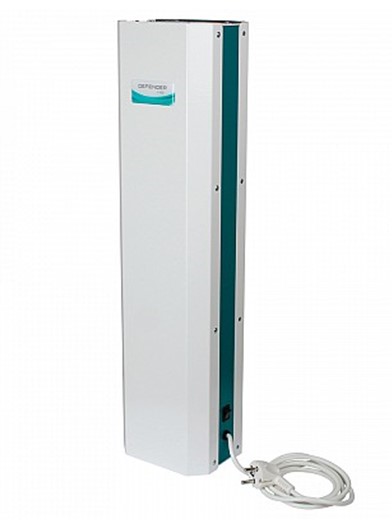Expensive and angry: why test-tube meat is unlikely to become a mass product
Make no mistake: the innovativeness of lab-grown MEAT, or cultured meat as the industry has come to call it, is not a great new generation business success story. Investors say otherwise, and while they can be justifiably proud that the USDA and the Food and Drug Administration (FDA) gave American startups Good Meat last week and Upside Foods' approval to commercialize their products, market penetration and scale up of the artificial meat business will be hampered by a number of factors. Not the least of these is cost: over the past five years, hundreds of industry start-ups have spent billions of dollars to develop. And it will take billions more.
Investor Lisa Feria, founder of Kansas City-based venture capital Stray Dog Capital, tells FORBES that the sector “needed a boost from outside to be able to say we’re not only growing, we’re succeeding in one of the most difficult aspects of getting a product to market — in cooperation with regulators. She adds: “The scalability aspect is still a very important, significant, rather costly aspect of bringing a product to market.”
Below are a few factors that indicate how long the product will have to go from regulatory approval to the dinner plates of the average American family.
Prices are high, but not high enough to make a profit
Meat production in the laboratory costs thousands, if not hundreds of thousands, of dollars per kilogram. Nevertheless, in order to equalize the cost of dishes from cultured meat with the prices of the names familiar to the consumer, the brands decided on significant losses. Upside Foods chicken will be the first to be sampled at Chef Dominic Crenn's Michelin-starred Bar Crenn in San Francisco , while Good Meat is available from Jose Andres's CHINA Chilcano in Washington - pricesnot yet installed. Andres owns the stock, and Krenn has a multi-year contract, but watching the right column of the menu raise the eyebrows of visitors on their foreheads is not desirable for either one or the other. Prices are expected to be quite reasonable. And big losses are expected.
Meat from a test tube may never pay off
Artificially set prices (only justified because it's a good thing to give a product to a wide audience to try) can ultimately hurt brands. The pricing system will not be viable for years, if not decades, and many of those now trying laboratory-produced meat for the first time will likely not even live to see the product become profitable.
“It’s still years of work before profitability, because the biggest challenge is whether we can produce millions of tons of goods per year to compete with traditional meat in any way,” says Feria, who finances Upside Foods, as well as a number of competing firms. She predicts that many startups will eventually be taken over by large manufacturers like Tyson Foods and JBS.
Cultivation is not a cheap pleasure
To grow laboratory meat, manufacturers use so-called bioreactors - the same equipment pharmaceutical companies use to make vaccines. The units are extremely expensive, and the queue for their use is scheduled for a long time ahead. Also expensive is the construction of plants that house bioreactors. Good Meat CEO Josh Tetrick says the 13,600-tonne plant will cost $650 million. Feria says one startup in her portfolio recently valued its plant conservatively at $450 million. Investors will have to look further for the money .
Will it taste like chicken?
When bringing new offerings to the market, Feria advises not to rush: “This will significantly affect the entire category, which products the consumer wants to try first. This item must be flawless. I want people to be amazed."
Synthetic meat is bad for the environment
Traditional methods of meat production do lead to irreversible climate change, but growing meat in the laboratory presents a slightly different problem - it requires a huge amount of energy. There is very little scientific research on this issue (especially those that are not funded by start-ups or industry associations) so far. However, several recent studies have found that there are reasons for concern. The Good Food Institute, a specialized think tank specializing in food from alternative proteins, recently said that if renewable energy sources are used to grow meat in a laboratory, then in 10 years this process may have a lesser impact on the environment than production from conventional meat. livestock. Study authorsbelieve that carbon emissions will be reduced by 80%, and less land will be used. But a 2015 paper says that if traditional energy sources are used to make cultured meat, it will be even worse than the production of conventional meat. Another study published last month found that the damage from lab-produced meat could be up to 25 times worse than from the average supermarket beef.
Of course, the industry can switch to renewable energy, but most plants are designed to be powered by the national grid. The system is already too overburdened and designed primarily for public infrastructure, and not for businesses, which may not be profitable.
Meat from the laboratory is not very useful
Experts believe that cultured proteins belong to the category of highly processed products. Scientists at the US National Institutes of HEALTH and specialized structures of the United Nations have not recommended eating them for many years . Some studies even point to the connection of some varieties of such products with cancer and other diseases. It is still too early to create nutrients based on the long-term effects of eating new proteins or exposure to a sterilized environment.
In addition, a measured and thoughtful workflow is not facilitated by the amount of capital that sponsors pour into the business , Adrian Rodriguez, an investment banker from Washington and founder of the Provenance Capital Group venture fund, explains Forbes. “All this translates into increased pressure due to potential risks - primarily in ensuring the safety of the product and conducting not only short-term, but also long-term tests,” the expert says.
Patent wars are coming
Plant-based protein pioneers IMPOSSIBLE FOODS and Motif FoodWorks are locked in a long (but bloodless) fight to make non-meat burgers a certain way. The same could happen in the cultured meat category. Each enterprise has its own proprietary technology. Some issue it in the form of a patent, others leave it a trade secret. Lab-grown start-ups, Rodriguez calls "obsessed companies that are too focused on protecting intellectual property for the sake of generating the profits associated with it."
Meat from a test tube does not solve the problem of food shortages
According to statistics, 40 million Americans are malnourished, and laboratory meat will not solve this problem. The manufacturing cost of this product is too high and will likely never drop too low. This means that investors are targeting only the most expensive lab-grown meats, such as fake rib-eye steaks, tenderloins and lobster necks, which will sell for much more than regular chicken nuggets or burgers. Paying $50 for a lab-grown burger is something most buyers won't want to pay, but some are willing to shell out that much for a ribeye. Therefore, this technology is financed and scaled mainly for wealthy consumers. And let 40 million eat a cake grown in a laboratory.



























































